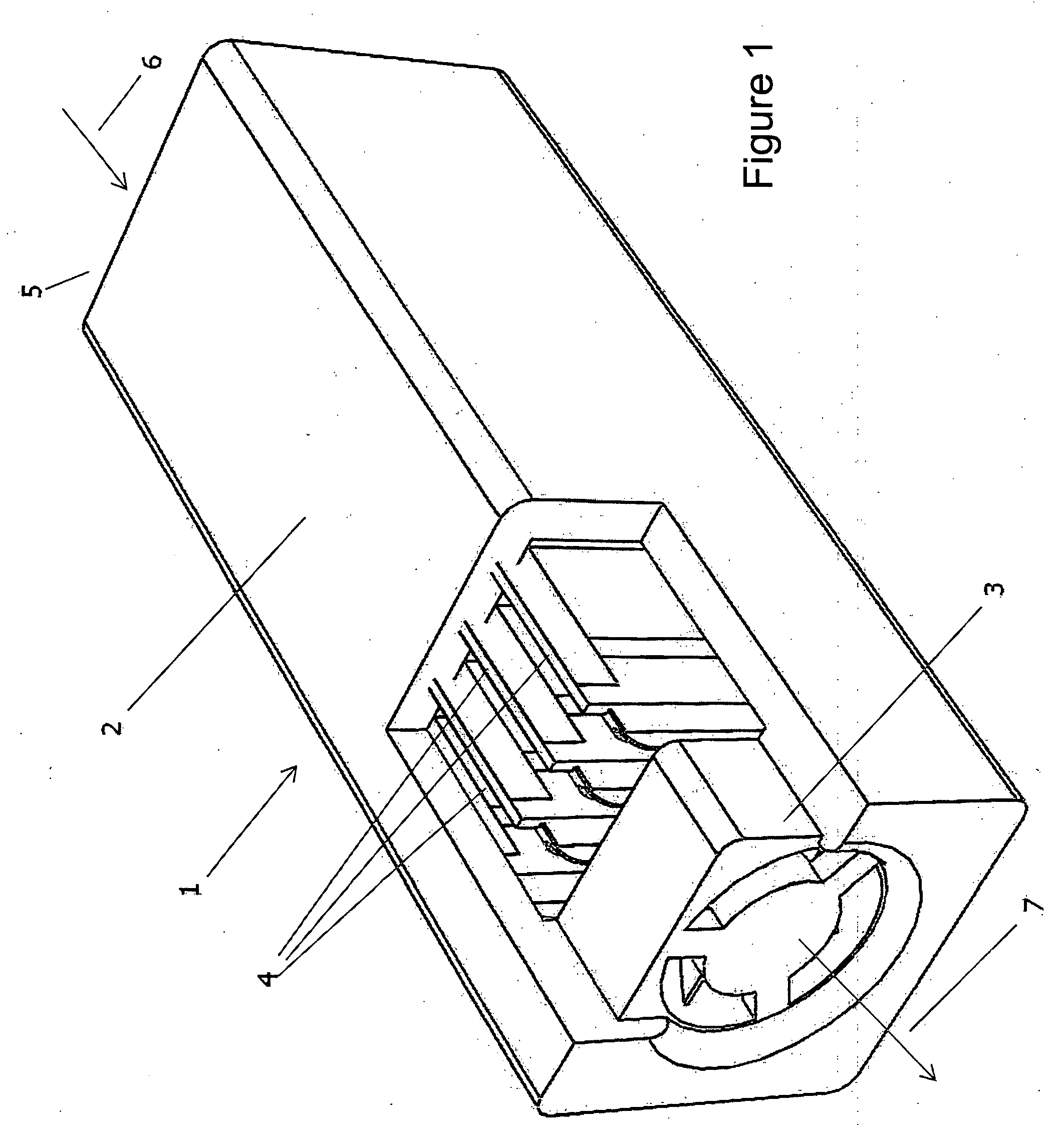Tree fruit postharvest chemical sensor
a chemical sensor and tree fruit technology, applied in the field of tree fruit postharvest chemical sensors, can solve the problems of no cost-effective real-time ethylene sensor in the market, no information is available for some newer varieties such as comice pears, and the production will not only age faster, but also begin to decay. , to achieve the effect of accurately detecting the presence of a target organic molecul
- Summary
- Abstract
- Description
- Claims
- Application Information
AI Technical Summary
Benefits of technology
Problems solved by technology
Method used
Image
Examples
example 1
[0099]A 7-mil Nafion membrane (from Ion-Power, Bear, Del.) is immersed in cold nitric acid in a one liter tall-form beaker. The acid is heated to boiling and maintained in that state for one hour. The membrane is then removed form the acid bath and rinsed several times with distilled water. The membrane is then immersed in distilled water and boiled for an additional hour. Treated membrane samples are then stored in distilled water until needed for plating.
[0100]Samples of the Nafion film are cut into 7.0 by 10.0 cm rectangles. The rectangles are clamped into a plating fixture which leaves two 3.6 by 7 cm sections of each side of the film exposed. The plating fixture is then inserted vertically into a Teflon plating cell, the fixture forming a barrier between a gold chloride solution on one side of the fixture and a sodium borohydride reducing solution on the other side of the fixture. A series of gold-plated Nafion films are prepared by contacting the films with using various gold ...
example 2
[0114]Film sample no. 6 from Example 1 is mounted as the anode in an electrochemical cell as shown in FIGS. 2 and 2A. Housing 220 and cap 240 are constructed of a molded polycarbonate resin. The film is supported by ribs to prevent it from flexing during the test. The counter electrode and reference electrode are each graphite rods. The electrolyte solution contained in cavity 222 is 0.05 M H2SO4.
[0115]A Custom Sensor Solutions model 1401 potentiostat is used to evaluate the electrochemical properties of the electrolytic cell. The potentiostat provides a known voltage across the cell from anode 224 to counter electrode 227.
[0116]The apparatus is tested by introducing a sample gas that is pulsed with ethylene. A nitrogen flow is supplied to the sensor, from a pressurized source, and through a tube connected to inlet 231 at a flow rate of 200 sccm. Varying concentrations of nitrogen are intermittently introduced into the nitrogen flow. The sensor produces a current of approximately 4 ...
PUM
| Property | Measurement | Unit |
|---|---|---|
| Substance count | aaaaa | aaaaa |
| Power | aaaaa | aaaaa |
| Concentration | aaaaa | aaaaa |
Abstract
Description
Claims
Application Information
 Login to View More
Login to View More - R&D
- Intellectual Property
- Life Sciences
- Materials
- Tech Scout
- Unparalleled Data Quality
- Higher Quality Content
- 60% Fewer Hallucinations
Browse by: Latest US Patents, China's latest patents, Technical Efficacy Thesaurus, Application Domain, Technology Topic, Popular Technical Reports.
© 2025 PatSnap. All rights reserved.Legal|Privacy policy|Modern Slavery Act Transparency Statement|Sitemap|About US| Contact US: help@patsnap.com



